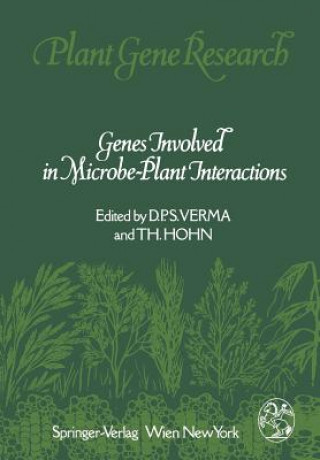
Versand
Kaufberater





Passt nicht? Macht nichts! Bei uns ist die Rückgabe innerhalb von 30 Tagen möglich
 Geschenkgutschein
In einem beliebigen Wert
Geschenkgutschein
In einem beliebigen Wert
Mit einem Geschenkgutschein können Sie nichts falsch machen. Der Beschenkte kann sich im Tausch gegen einen Geschenkgutschein etwas aus unserem Sortiment aussuchen.
Genes Involved in Microbe-Plant Interactions
 Englisch
Englisch
 177 b
177 b
30 Tage für die Rückgabe der Ware
Das könnte Sie auch interessieren


Interdependence between species is a law of nature. The degree of this interdependence is vividly evident in the plant-microbial world. Indeed, there is no axenic plant in nature and one finds various forms of interac tions between these two kingdoms ranging from completely innocuous to obligate parasitic. Most of these interactions are poorly understood at the molecular and physiological levels. Only those few cases for which a molecular picture is emerging are discussed in this volume. With the advent of recombinant DNA technology and the realization that some of these interactions are very beneficial to the host plant, a spate of activity to understand and manipulate these processes is occurring. Microbes interact with plants for nutrition. In spite of the large number of plant-microbe interactions, those microbes that cause harm to the plants (i. e. , cause disease) are very few. It is thus obvious that plants have evolved various defense mechanisms to deal with the microbial world. The mecha nisms for protection are highly diverse and poorly understood. Some pathogens have developed very sophisticated mechanisms to parasitize plants, an excellent example for this being crown gall caused by a soil bac terium, Agrobacterium tumefaciens. A remarkable ingenuity is exhibited by this bacterium to manipulate its host to provide nitrogenous compounds which only this bacterium can catabolize. This is carried out by a direct gene transfer mechanism from bacteria to plants.
Informationen zum Buch
 Englisch
Englisch
Kategorie


 Kontakt
Kontakt Wie einkaufen
Wie einkaufen




























